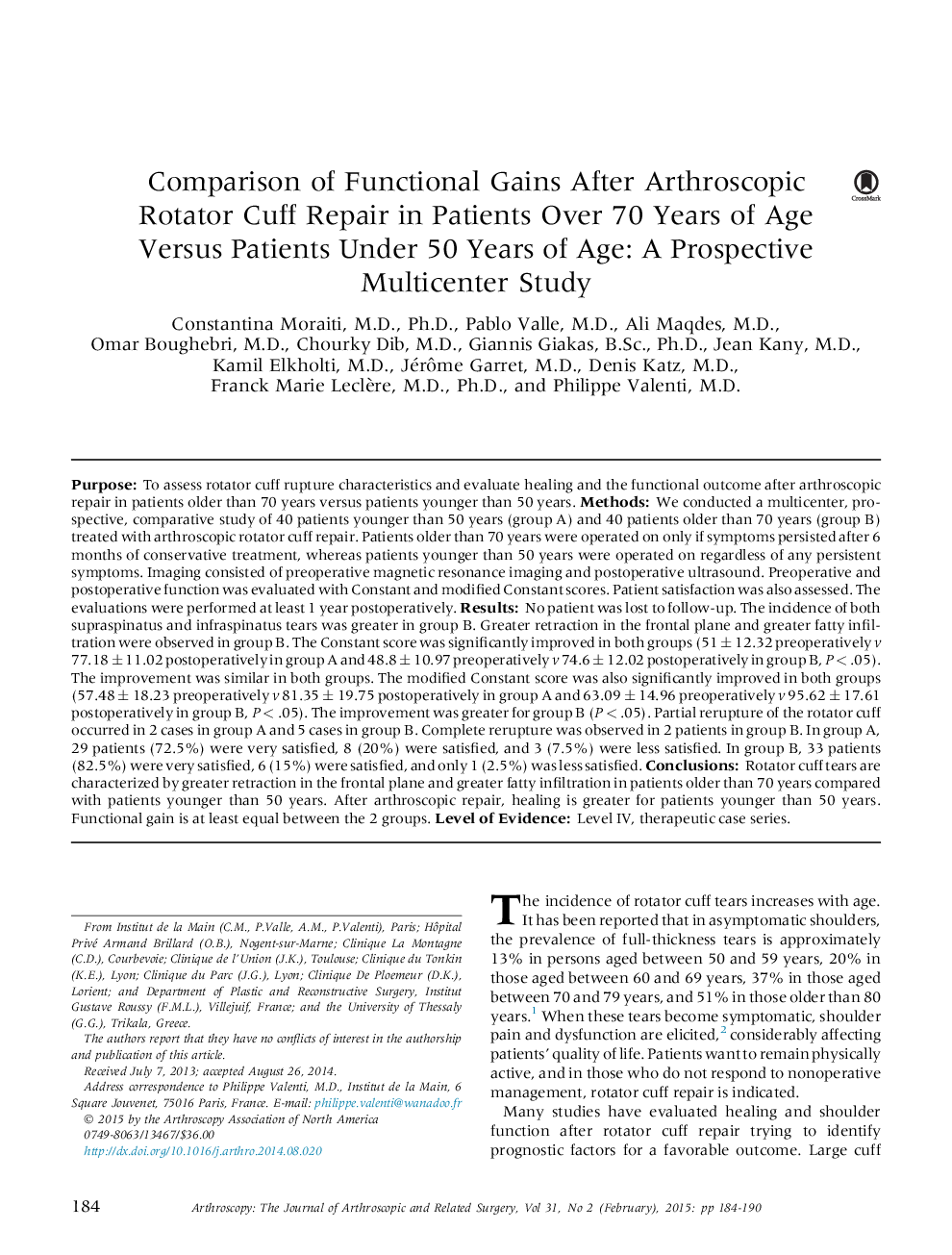| Article ID | Journal | Published Year | Pages | File Type |
|---|---|---|---|---|
| 4042459 | Arthroscopy: The Journal of Arthroscopic & Related Surgery | 2015 | 7 Pages |
PurposeTo assess rotator cuff rupture characteristics and evaluate healing and the functional outcome after arthroscopic repair in patients older than 70 years versus patients younger than 50 years.MethodsWe conducted a multicenter, prospective, comparative study of 40 patients younger than 50 years (group A) and 40 patients older than 70 years (group B) treated with arthroscopic rotator cuff repair. Patients older than 70 years were operated on only if symptoms persisted after 6 months of conservative treatment, whereas patients younger than 50 years were operated on regardless of any persistent symptoms. Imaging consisted of preoperative magnetic resonance imaging and postoperative ultrasound. Preoperative and postoperative function was evaluated with Constant and modified Constant scores. Patient satisfaction was also assessed. The evaluations were performed at least 1 year postoperatively.ResultsNo patient was lost to follow-up. The incidence of both supraspinatus and infraspinatus tears was greater in group B. Greater retraction in the frontal plane and greater fatty infiltration were observed in group B. The Constant score was significantly improved in both groups (51 ± 12.32 preoperatively v 77.18 ± 11.02 postoperatively in group A and 48.8 ± 10.97 preoperatively v 74.6 ± 12.02 postoperatively in group B, P < .05). The improvement was similar in both groups. The modified Constant score was also significantly improved in both groups (57.48 ± 18.23 preoperatively v 81.35 ± 19.75 postoperatively in group A and 63.09 ± 14.96 preoperatively v 95.62 ± 17.61 postoperatively in group B, P < .05). The improvement was greater for group B (P < .05). Partial rerupture of the rotator cuff occurred in 2 cases in group A and 5 cases in group B. Complete rerupture was observed in 2 patients in group B. In group A, 29 patients (72.5%) were very satisfied, 8 (20%) were satisfied, and 3 (7.5%) were less satisfied. In group B, 33 patients (82.5%) were very satisfied, 6 (15%) were satisfied, and only 1 (2.5%) was less satisfied.ConclusionsRotator cuff tears are characterized by greater retraction in the frontal plane and greater fatty infiltration in patients older than 70 years compared with patients younger than 50 years. After arthroscopic repair, healing is greater for patients younger than 50 years. Functional gain is at least equal between the 2 groups.Level of EvidenceLevel IV, therapeutic case series.
